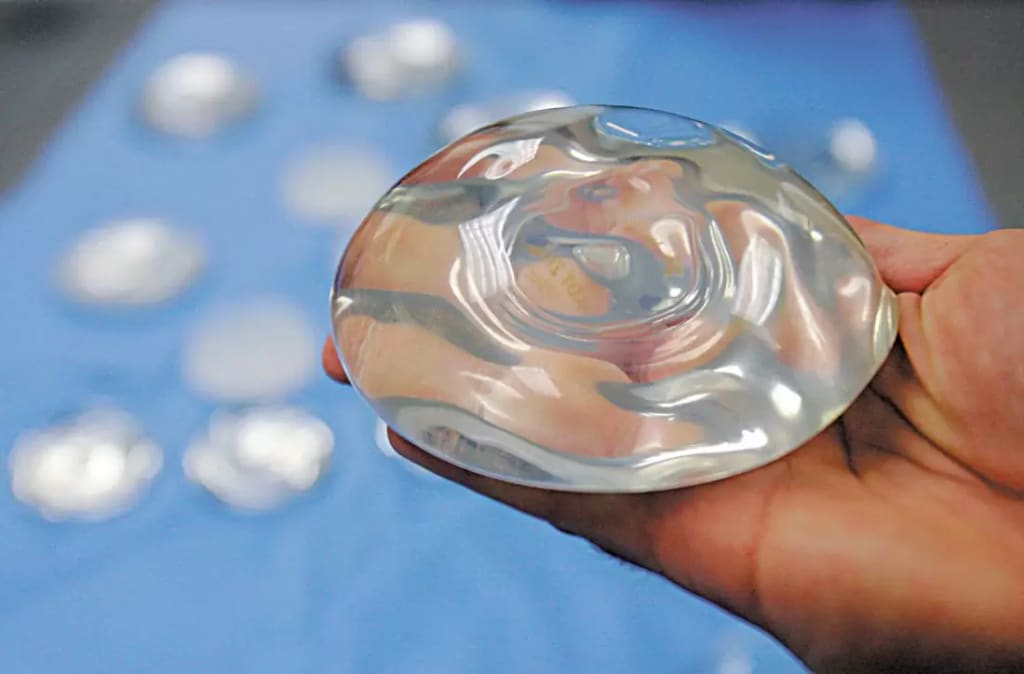Breast Implant Safety
Replacement Surgery After Implant Rupture

Breast implants have become a widely chosen option for women seeking to enhance their breast size or reconstruct their breasts after surgery. While these implants are generally considered safe, like any medical procedure, they come with potential risks and considerations. This article explores the safety aspects of breast implants, covering key factors such as types of implants, risks associated with surgery, regulatory oversight, and ongoing research.
Types of Breast Implants
There are two primary types of breast implants: saline-filled and silicone gel-filled. Saline implants are filled with sterile saltwater after insertion, while silicone gel implants come pre-filled with a cohesive silicone gel. Both types have undergone extensive development to improve safety and longevity, with manufacturers adhering to rigorous testing and regulatory standards.
Risks and Complications
Although breast implants are generally safe, they can lead to complications. These may include:
Capsular Contracture: A common complication where scar tissue forms around the implant, causing it to feel firm and potentially altering breast shape.
Implant Rupture: While modern implants are designed to withstand wear and tear, ruptures can occur due to trauma, manufacturing defects, or natural aging of the implant shell. Saline implants deflate noticeably when ruptured, while silicone gel may leak more subtly (known as silent rupture).
Infection: Like any surgical procedure, there is a risk of infection around the implant site, which can lead to inflammation, pain, and in severe cases, require implant removal.
Changes in Sensation: Some women may experience temporary or permanent changes in nipple sensation or breast sensitivity after surgery.
Implant Displacement: Implants can shift or move over time, causing asymmetry or discomfort that may require corrective surgery.
Regulatory Oversight and Safety Measures
In the United States, breast implants are regulated by the Food and Drug Administration (FDA), which reviews their safety and effectiveness before they can be marketed. Manufacturers are required to conduct long-term studies to monitor implant performance and safety outcomes. Recently, the FDA has taken steps to improve patient education and ensure informed consent regarding potential risks associated with breast implants.
Patient Education and Informed Consent
Before undergoing breast augmentation or reconstruction, it's crucial for patients to have a thorough consultation with a qualified plastic surgeon. This includes discussing personal health history, lifestyle factors, and understanding the potential risks and benefits of implants. Patients should be provided with detailed information about the procedure, implant options, recovery process, and realistic expectations for outcomes.
Ongoing Research and Advancements
Continuous research and technological advancements in implant design aim to improve safety and patient satisfaction. This includes innovations in implant materials, techniques for minimizing complications, and better understanding long-term outcomes. Additionally, healthcare providers and regulatory agencies regularly review and update guidelines based on emerging data and patient experiences.
Breast implants can be a transformative option for women seeking to enhance their body image or regain confidence after mastectomy. While they are generally safe, it's essential for individuals considering surgery to weigh the potential risks against the benefits and make informed decisions in consultation with qualified medical professionals. By staying informed, prioritizing safety measures, and maintaining open communication with healthcare providers, patients can navigate the journey of breast augmentation or reconstruction with confidence and peace of mind.
Implant Rupture Issue
Breast implant rupture refers to the breach or tear in the implant shell, which can occur due to various factors such as trauma, natural aging of the implant, or manufacturing defects. The type of implant (saline or silicone) determines how a rupture is detected and its potential effects:
Saline Implants: These implants typically deflate noticeably when ruptured, causing a visible change in breast size and shape. The saline solution is harmlessly absorbed by the body.
Silicone Implants: Silicone gel-filled implants may experience "silent rupture," where the gel leaks more subtly into surrounding tissues without immediate external signs. Regular monitoring through imaging tests (MRI or ultrasound) is recommended to detect silent ruptures.
Signs and Symptoms
Common signs of implant rupture include changes in breast shape or size, pain or discomfort, swelling, firmness, and asymmetry between breasts. It's essential for individuals with implants to regularly perform self-examinations and attend follow-up appointments with their healthcare provider to monitor for any changes indicating potential rupture.
Diagnostic Evaluation
If implant rupture is suspected, diagnostic imaging such as MRI, ultrasound, or mammography may be utilized to confirm the diagnosis and assess the extent of the rupture. These tests provide critical information to guide treatment decisions and determine the condition of the implant and surrounding tissues.
Replacement Options
The approach to replacing a ruptured breast implant depends on several factors, including the type of implant, the presence of symptoms, and the individual's aesthetic goals. Treatment options may include:
Implant Removal and Replacement: Surgical removal of the ruptured implant followed by replacement with a new implant is a common approach. This procedure allows for addressing any silicone leakage or saline deflation and restoring breast symmetry and shape.
Capsulectomy: In cases where there is significant capsular contracture (scar tissue around the implant) or silicone migration, surgical removal of the scar tissue (capsulectomy) may be necessary to improve cosmetic outcomes and alleviate discomfort.
Consideration of Implant Type: During the replacement process, individuals may choose to stay with the same type of implant or switch to a different type (e.g., transitioning from saline to silicone implants) based on personal preference and medical advice.
Recovery and Follow-Up Care
Following implant replacement surgery, patients can expect a recovery period similar to their initial implant procedure, including post-operative care instructions and monitoring for any signs of complications. Regular follow-up appointments with the surgeon are essential to ensure proper healing and long-term implant success.
Emotional and Practical Considerations
Experiencing a breast implant rupture can be emotionally challenging, impacting self-esteem and body image. Open communication with healthcare providers, support from loved ones, and access to resources for emotional support are crucial during this time. Understanding that treatment options are available and tailored to individual needs can help alleviate anxiety and facilitate a positive recovery experience.
Navigating breast implant replacement after rupture involves careful consideration of diagnostic findings, treatment options, and personal preferences. With advances in implant technology and surgical techniques, individuals facing this situation can achieve satisfactory outcomes with appropriate medical guidance and support. By staying informed, proactive, and maintaining a partnership with their healthcare team, patients can confidently address and resolve issues related to breast implant rupture, ultimately restoring both physical and emotional well-being.
About the Creator
Nazmi Baycin
Dr. Nazmi Baycin is a board certified plastic surgeon. As the head plastic surgeon, he has performed more than 7000 surgeries. He specializes in all procedures within the field of plastic surgery in Dubai.
Enjoyed the story? Support the Creator.
Subscribe for free to receive all their stories in your feed. You could also pledge your support or give them a one-off tip, letting them know you appreciate their work.






Comments
There are no comments for this story
Be the first to respond and start the conversation.